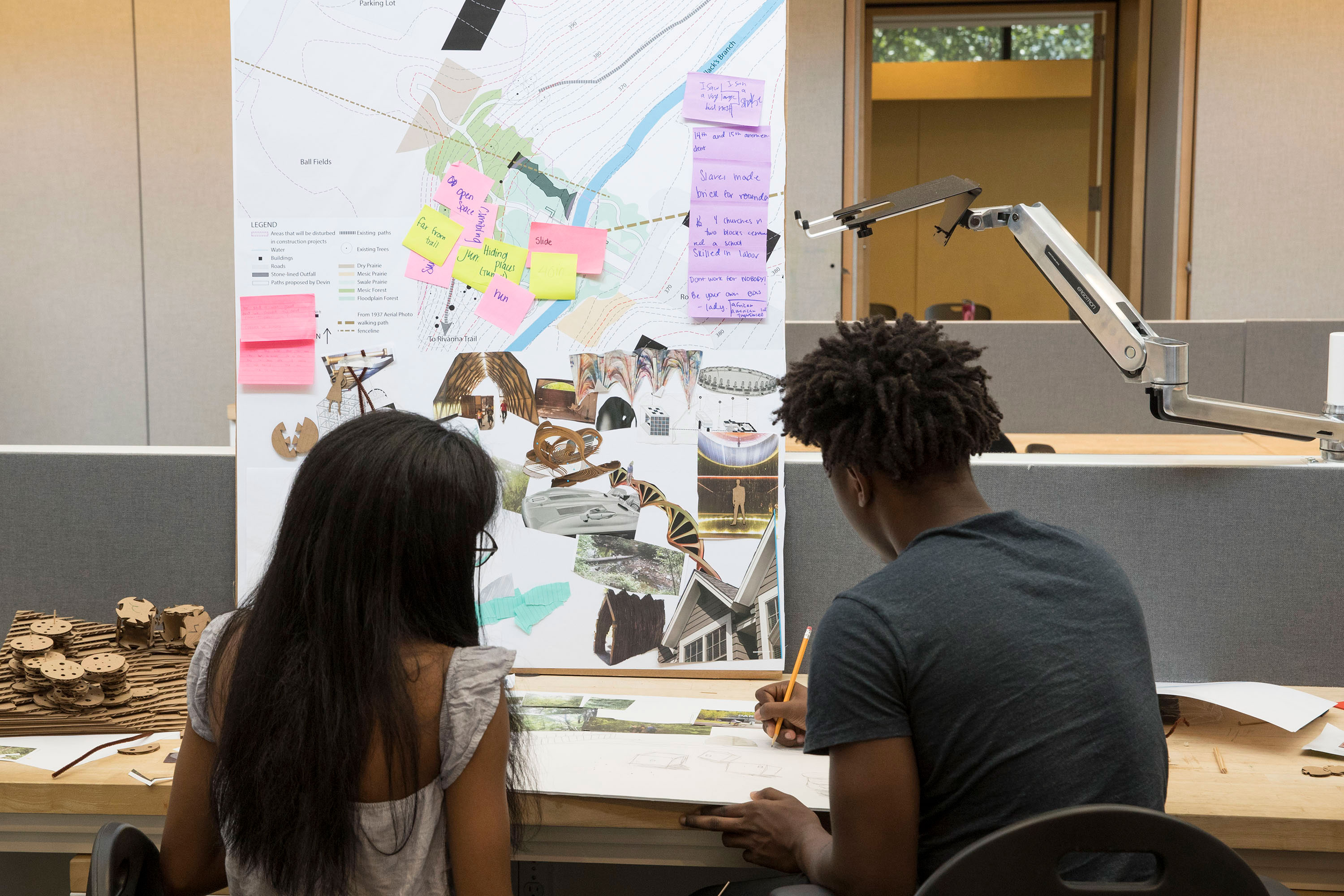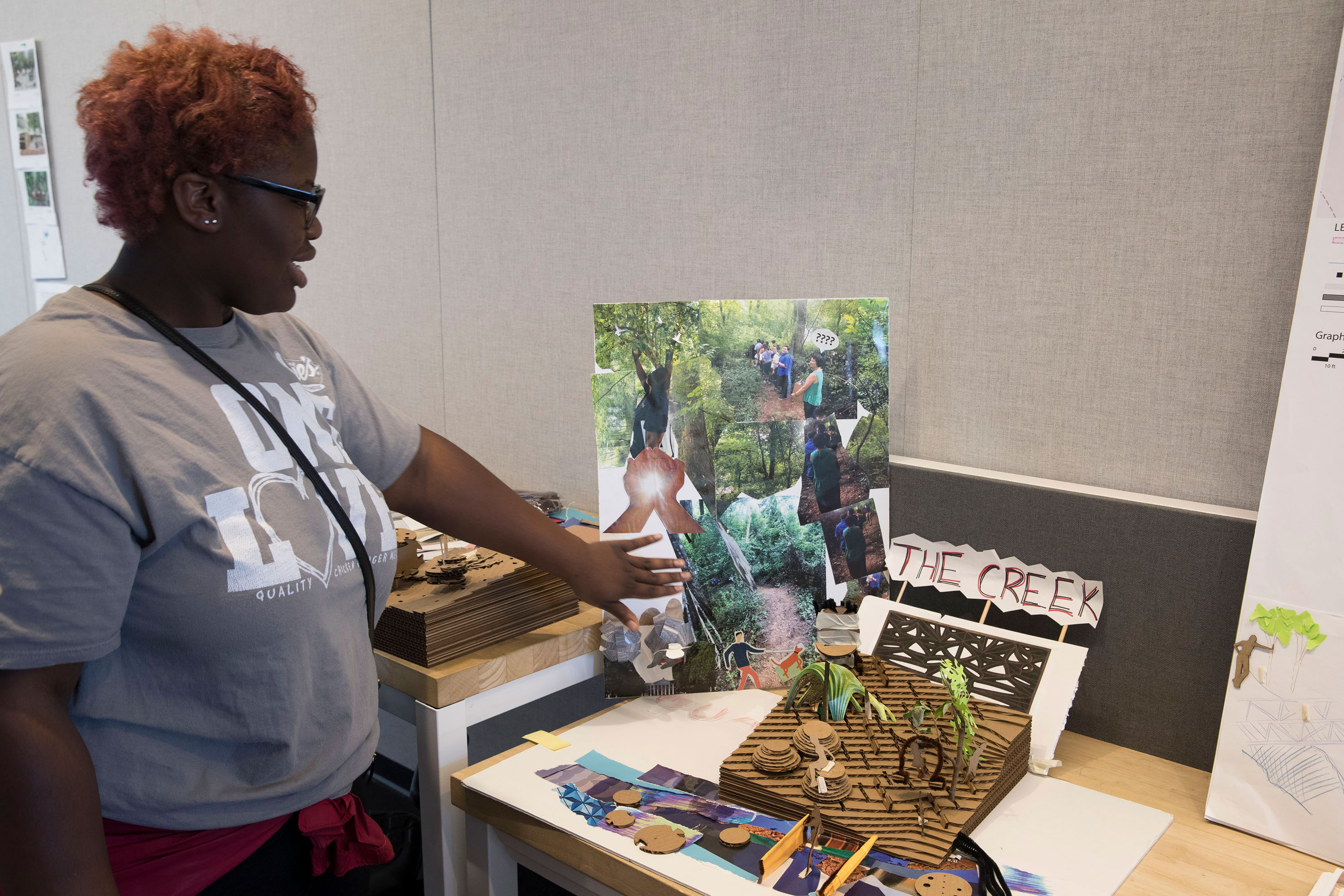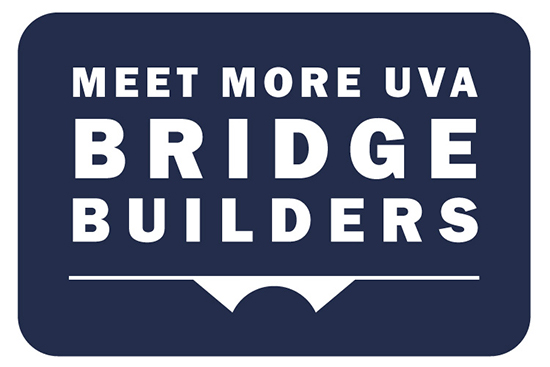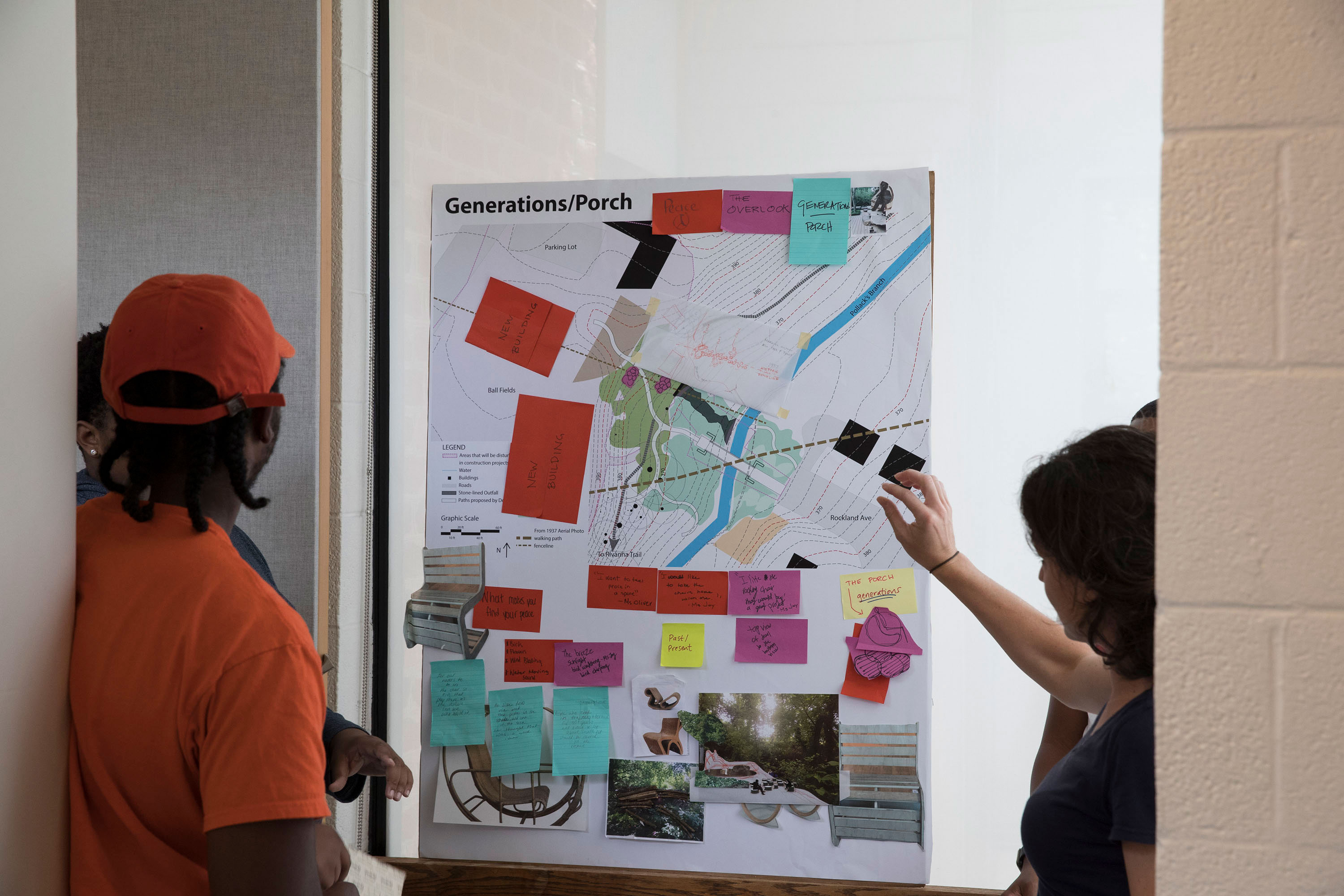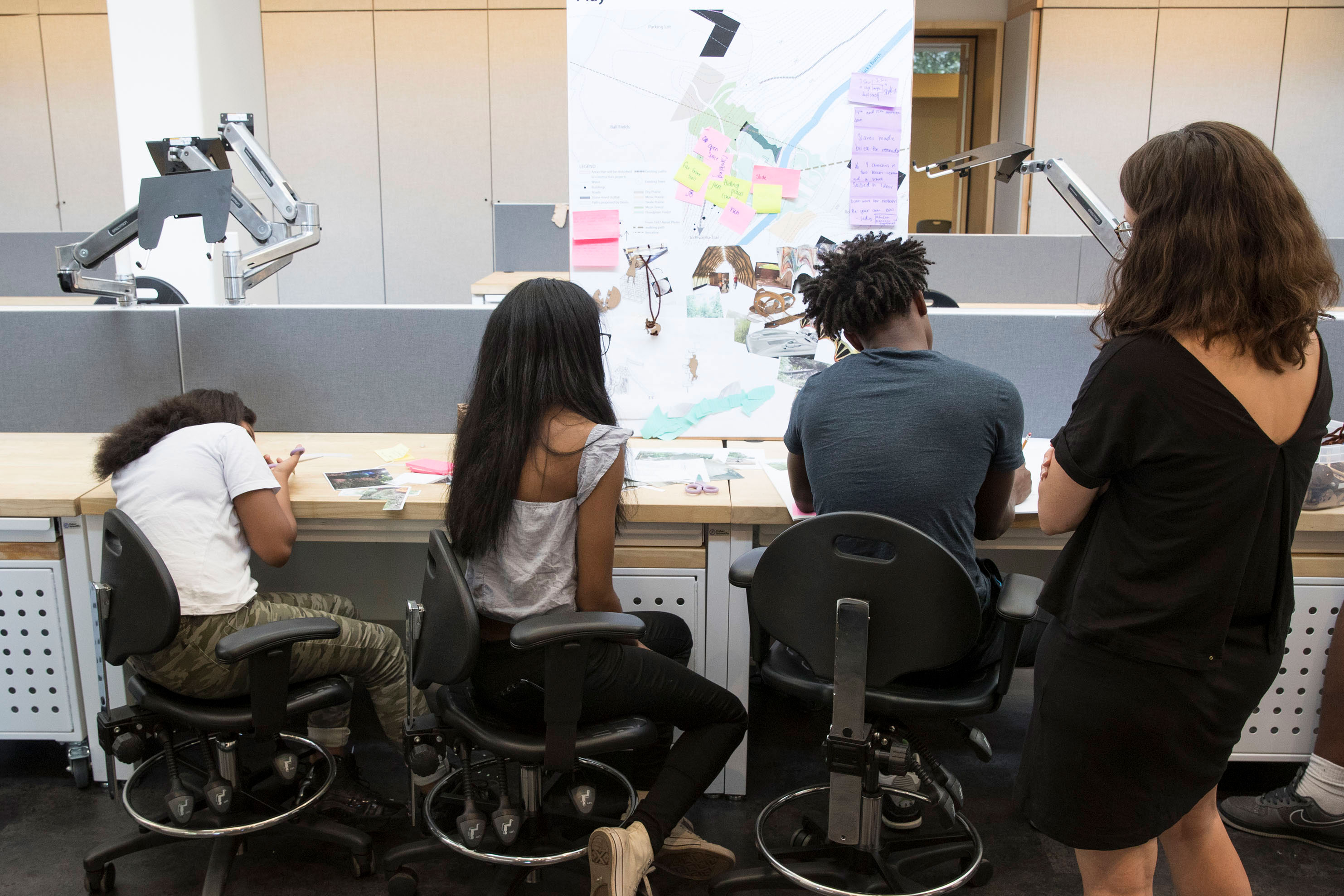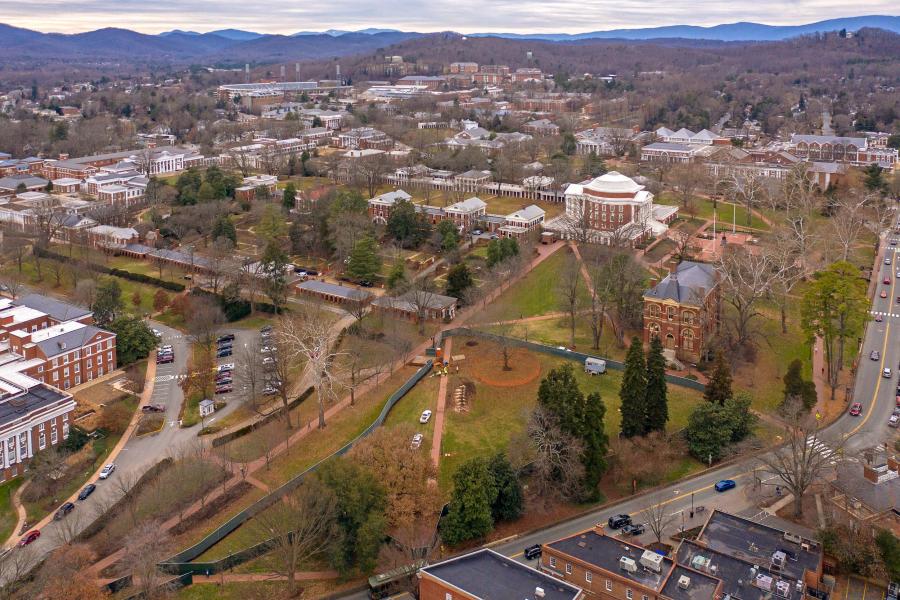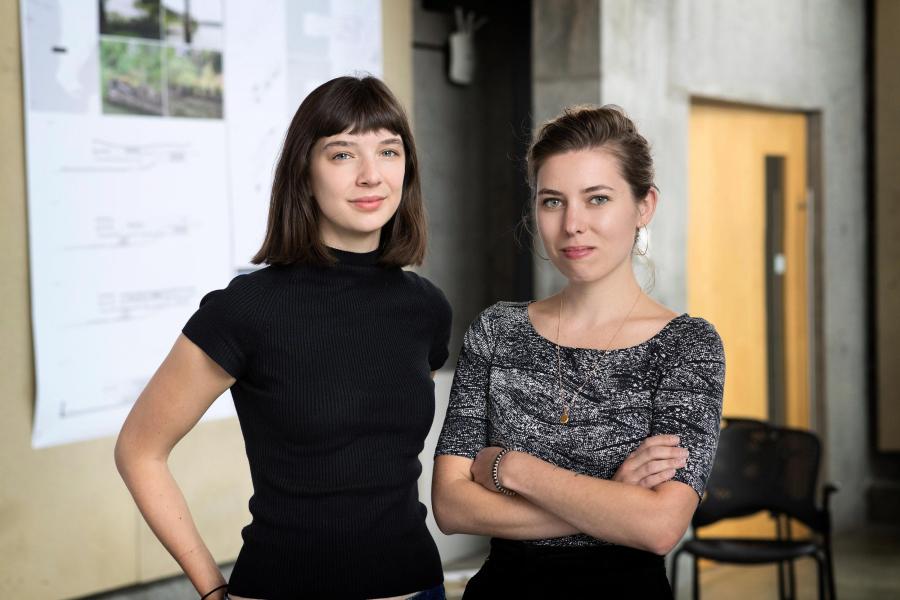Oliver was impressed with the students’ dedication.
“Barbara brought the youth here, we showed them what we wanted and talked for a while,” she said. “Then they went right back down into the woods [to review the site again] and I thought, ‘Wow, they are so interested in doing this right.’”
Some students researched the history of the site, Oliver said, and found evidence that it was once home to enslaved laborers. All of the students brainstormed their own designs, creating models that they presented to Oliver and other housing officials last Friday.
Faulker and his friend, Izaiah Richardson, based their design on a simple, almost universal childhood memory – playing hide-and-seek.
“We all talked about playing hide-and-seek on the playground,” Faulker said. Their design calls for elevated paths and a tumble of sleek, hollow cubes that use wood from the ash tree – and offer some great hiding places.
“We wanted to create a place where people can relax and play at the same time, with space to do both without interrupting each other,” he said.
The two signed up for the program to “try something new.” Richardson didn’t know much about architecture, other than what he had seen on television. Faulker has a few family members who work in the field.
Two weeks later, they were both glad they came.
“I wanted to try something different this summer, instead of sitting around the house for two weeks,” Faulker said. “I think this is great experience.”
Oliver said she was thrilled with the students’ final designs, which will be on display in the School of Architecture this fall. Four of the young designers have been invited to help lead the transformation of these ideas through the fabrication and installation process, which will also be done in partnership with Oliver and Brenda Kelley, the redevelopment manager at the City of Charlottesville.
“They did an excellent job, and most of them had never done anything like this before,” Oliver said. “I was just so happy for them, so proud of them and just thankful for them. I can’t wait to see what happens.”
